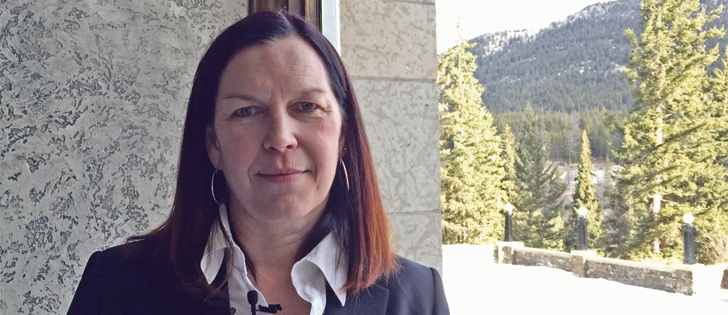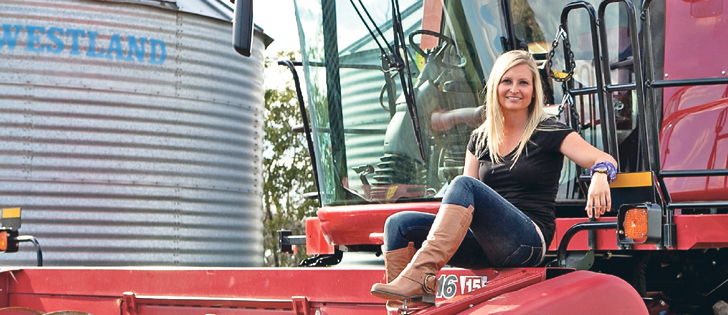This is the final instalment of a three-part series looking at the role women play in agriculture. This week we feature the career of the new chief commissioner of the Canadian Grain Commission, Patti Miller.
This is the third of a four-part series looking at the role women play in agriculture, how it has changed and what the future holds.
Patti Miller has never been one to stand still.
In the constantly evolving agriculture industry, Miller herself evolves, periodically reinventing her career from market analyst to private sector corporate affairs employee to government farm income specialist to the head of the agency responsible for the country’s grain quality and handling system.
Yet ironically, Miller doesn’t see herself as an agent of change for gender equality.
Read Also

Feds propose overhaul of chronic wasting disease control program
Chronic Wasting disease control program getting updated by Canadian Food Inspection Agency with feedback encouraged from producers.
Her history suggests she has been, but she seldom has thought about it that way, especially when she was starting out.
“I hate to admit this, but probably at the time, I was a little bit oblivious to whether or not it was hard. It was just the next thing that was in front of me,” she said.
One thing she always knew, though, was her love for agriculture. She was raised in Saskatoon and had grandparents who farmed in northeastern Saskatchewan, where she spent many of her summers.
“I always loved being out in the country, being on the farm,” Miller said.
“When it came time to decide what to do in university, for me it was a choice between, ‘gee, am I going to go into phys-ed or am I going to go into agriculture?’ And I was just drawn to agriculture.”
After graduating with a master’s degree in agricultural economics from the University of Saskatchewan, Miller landed her first job in 1985 with Agriculture Canada as a wheat market analyst.
She moved to Cargill to work in corporate affairs and communications from 1996-2001, before moving back to Agriculture Canada to work in market industry services for functional foods and nutraceuticals.
From there, she moved to the grains and oilseeds division of Agriculture Canada and eventually took over as the division’s executive director, which involved working on policy and regulatory issues with her market analysis team.
She then shifted once again, becoming Agriculture Canada’s director general of farm income programs for three years, before moving to the Canola Council of Canada as president in 2012.
On Feb. 13, she was appointed chief commissioner of the Canadian Grain Commission.
It is a career laced with change and one that has been lived outside of the usual tried-and-true job options for women.
When Miller thinks back to her early career days, she said she failed to realize then the struggles of the women who went before her — the suffrage movements of the early 1900s and other equal rights activists through the years up to modern times.
“Later on, when I was probably a bit more aware of things and seeing more directly some of the challenges and recognizing that there are differences, and there are sometime obstacles that are put in front of you that aren’t put in front of your colleagues, and when you’re aware of something, it makes it a bit more challenging to get through, more frustrating,” she said.
Miller said there were so few women in leadership positions then that she was often the only woman in the room at country meetings or industry conferences.
She said that made it difficult for her to have a sense of belonging or feel like one of the group.
She and others in the group shared the common bond of agriculture, but it was difficult to find shared experiences and forge a sense of community beyond that.
That is one of the biggest changes she sees today, as far as gender equality and agriculture are concerned.
Considerably more women work in the business today — be it as agronomists or market analysts or as farmers — and they have opportunities to have that shared community: a forum to share common experiences, air grievances or discuss common issues.
Miller said she feels fortunate to have met supportive men along the way who acted as mentors, as well as her mother, who encouraged her to dream big and take risks.
But there’s another side of that story.
“I’ve also been very challenged by people who, yes, thought that when I got a promotion or when I got a certain position, it was because I was a woman.”
Combating those sexist attitudes came down to knowing she de-served to be in those positions.
“I don’t ever feel like anything was just handed to me because I was a woman, and sometimes you do have to work twice as hard to prove yourself to some people, but not everybody.”
She said despite the advancements in gender equality from 30 years ago, the struggle continues with more work needed to promote women into senior management positions in government, private businesses and around boardroom tables.
For young women who might be pondering where to take their careers, Miller said the great thing about agriculture lies in its diversity. People interested in science, international trade, policy and public relations can all find outlets in agriculture.
“It’s all embodied in this one industry, so it’s an exciting place to work,” she said.
“You have to work hard, but there are just wonderful opportunities here to learn and to grow.”















